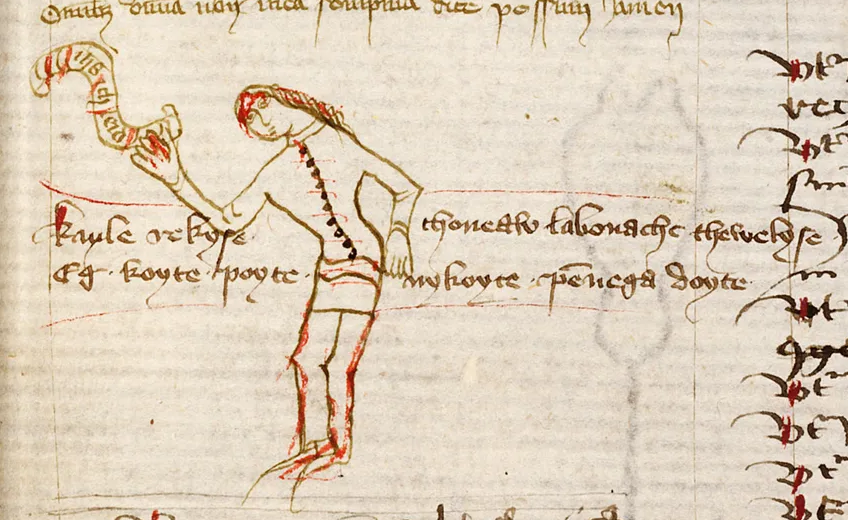
We are offering Prussian language lessons to anyone who would like to learn.
Lessons are either online or in-person in Vilnius. The course can be either an individual programme or a more structured course if a group is formed.
What will we do?
If you are interested, please email us to arrange a trial lesson: glabbis@prusai.org

Electronic dictionary
Prussian newspaper Prūsas Tāutas Prēigara
Youtube channel Prūsiska Tāliwidāsna
Facebook group Prūsas Brātrija, for conversation in Prussian
Recordings of spoken Prussian
List of various additional resources

Prussian is a Western Baltic language. The range of Western Baltic languages and dialects covers parts of present-day Belarus, Poland, Lithuania, Latvia and the Königsberg region. Until the 16th century, there were still many Prussian, Curonian, Sudovian, and Jotvingian languages or dialects.
Written sources of the Prussian language include:
Officially, Prussian was spoken until the 18th century (according to one historical account from 1700, the last Prussian-speaking grandfather in the Curonian Spit died in 1677, but said that „there are still some of them [i.e. Prussian speakers] there”).
In 1821 Johann Severin Vater, in 1821 Samuel Linde published his studies of the Prussian language. Their grammar does not differ much from the grammar of Prussian today. [More in Prussian]
In 1845 G. Nesselmann published The Old Prussian Language, and in 1873 an academic dictionary of Prussian. [More in Prussian]
Between 1920 and 1940, Prussian poets and writers such as J. Bobrovsky had a keen sense of the Prussian language and saw it everywhere in the landscape.
It is said that during the evacuation from Prussia in 1945, some people happened to hear Prussian being spoken, because in the general panic, those who could speak Prussian did not hide their language.

In 1975, the academic linguist V. Toporov published Volume I of the Prussian Dictionary.
In 1980, the Lutheran priest Gerd Litik and his wife Ruth founded the Prussian Society Tolkemita in Germany. Gerd himself conducted masses in Prussian. A member of the Society, Gunnar Kraft-Skalvyn, created a grammar and dictionary of the Prussian language and wrote poetry. Another Tolkemita poet was Heinz Georg Podehl.
Around 1983, the Baltic scholar Letas Palmaitis started to correspond with Vladimir Toporov in Prussian. As a result, they jointly published a manifesto for the restoration of the Prussian language From the reconstruction of the old Prussian language to the new Prussian.
In 1988, Prūsa was founded in Lithuania by Letas Palmaitis and Jonas Trinkūnas as a cultural club of Baltic Prussians.
Since 1989, Prūsa began publishing a Prussian newspaper Prūsas Tāutas Prēigara.
In 1989 L. Palmaitis published a grammar of the living Prussian language.
In 1989, branches of the Prūsa club were opened in Riga and Olsztyn.
In 1988, the Baltic scholar Vytautas Mažiulis published Volume I of his Dictionary of the Etymology of the Prussian Language.
From 1988 to 1998, Valdis Muktupāvels, a member of the Riga Prussian branch, played and recorded Prussian music with the group Rasa.
From 1994 to 1999, Wittings Wannags and Dailūns Russinis, members of the Riga Prussian Branch, published the newspaper Prūsas Waīstis.
In 1999 L. Palmaitis published a dictionary of living Prussian language.
In 2001 the Prussian Community of Lithuania was founded.
In 2005 Kūlgrinda released an album of Prussian songs Prūsų Giesmės.
Since 2006, Prussian language and culture camps were held.
From 2006, a Prussian language online forum was created.
In 2014 and 2016 the music group Romowe Rikoito released the Prussian albums Undēina and Namawār.
First wave: 1992-1993 - language use began (more in Latvia).
Second wave: from 2005-2007 language use started spreading through the Königsberg region, Poland, Latvia, Lithuania, Belarus.
From 2007 onwards, children began speaking Prussian.
Third wave: online communication worldwide since 2017.